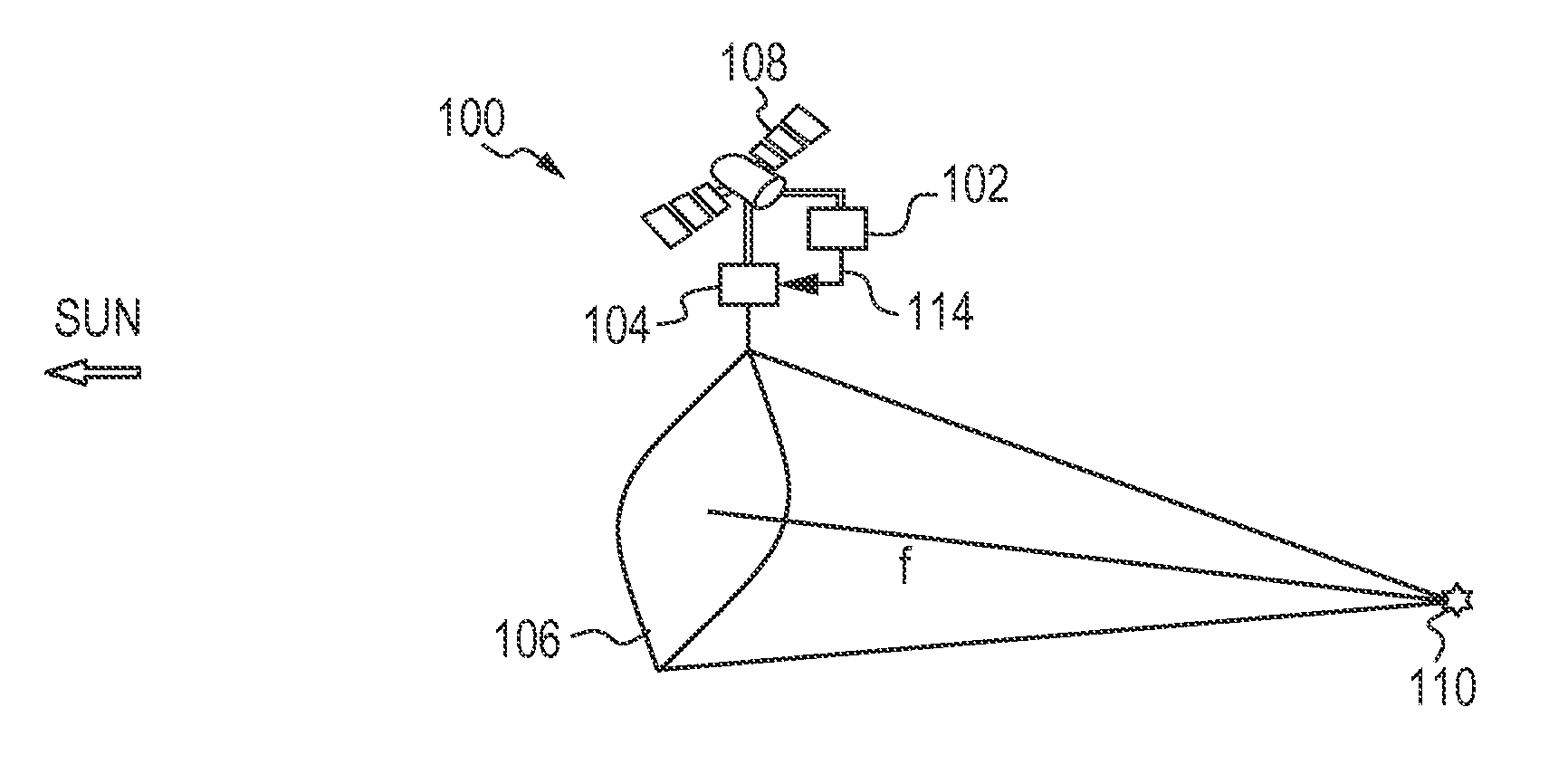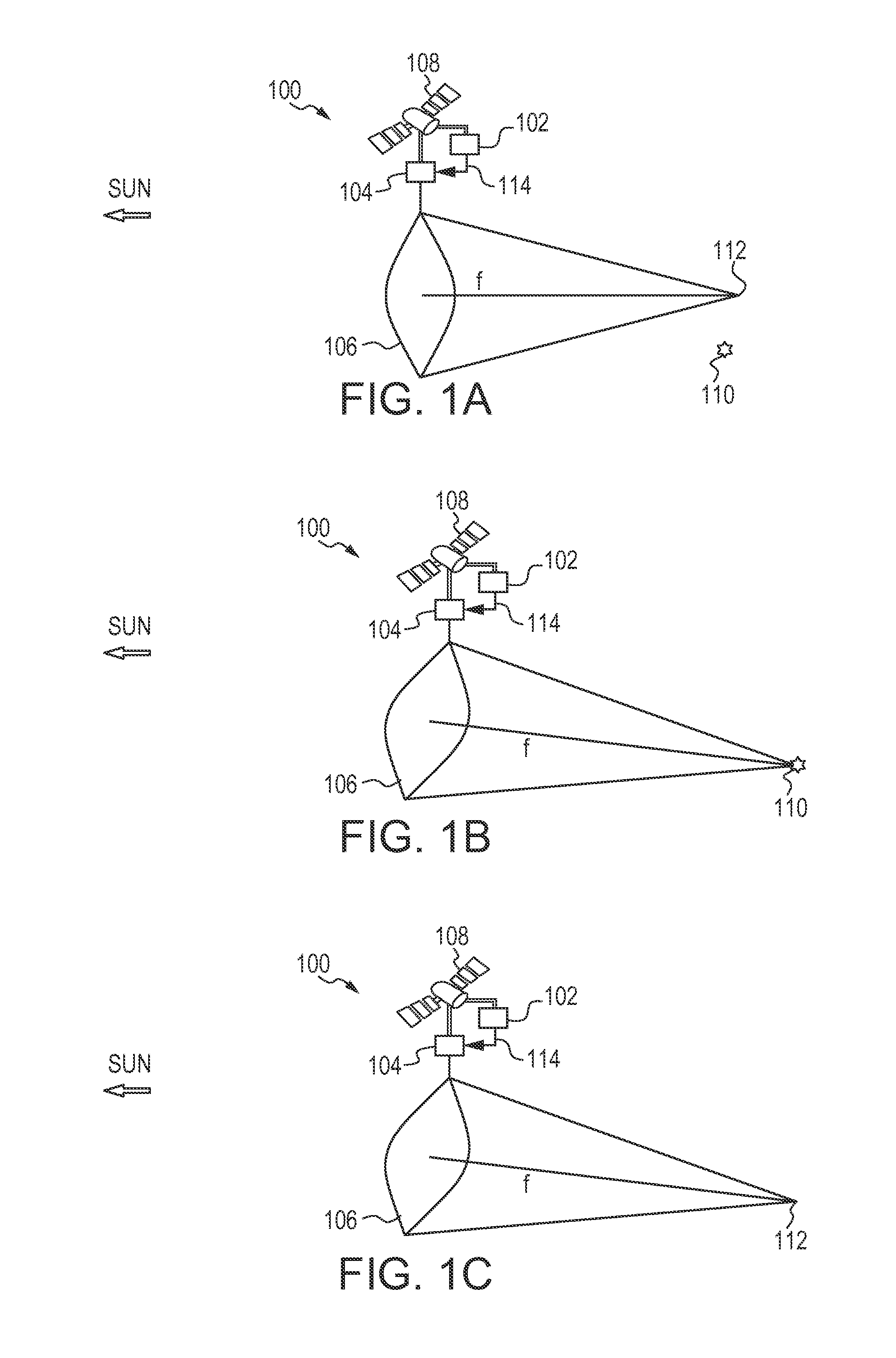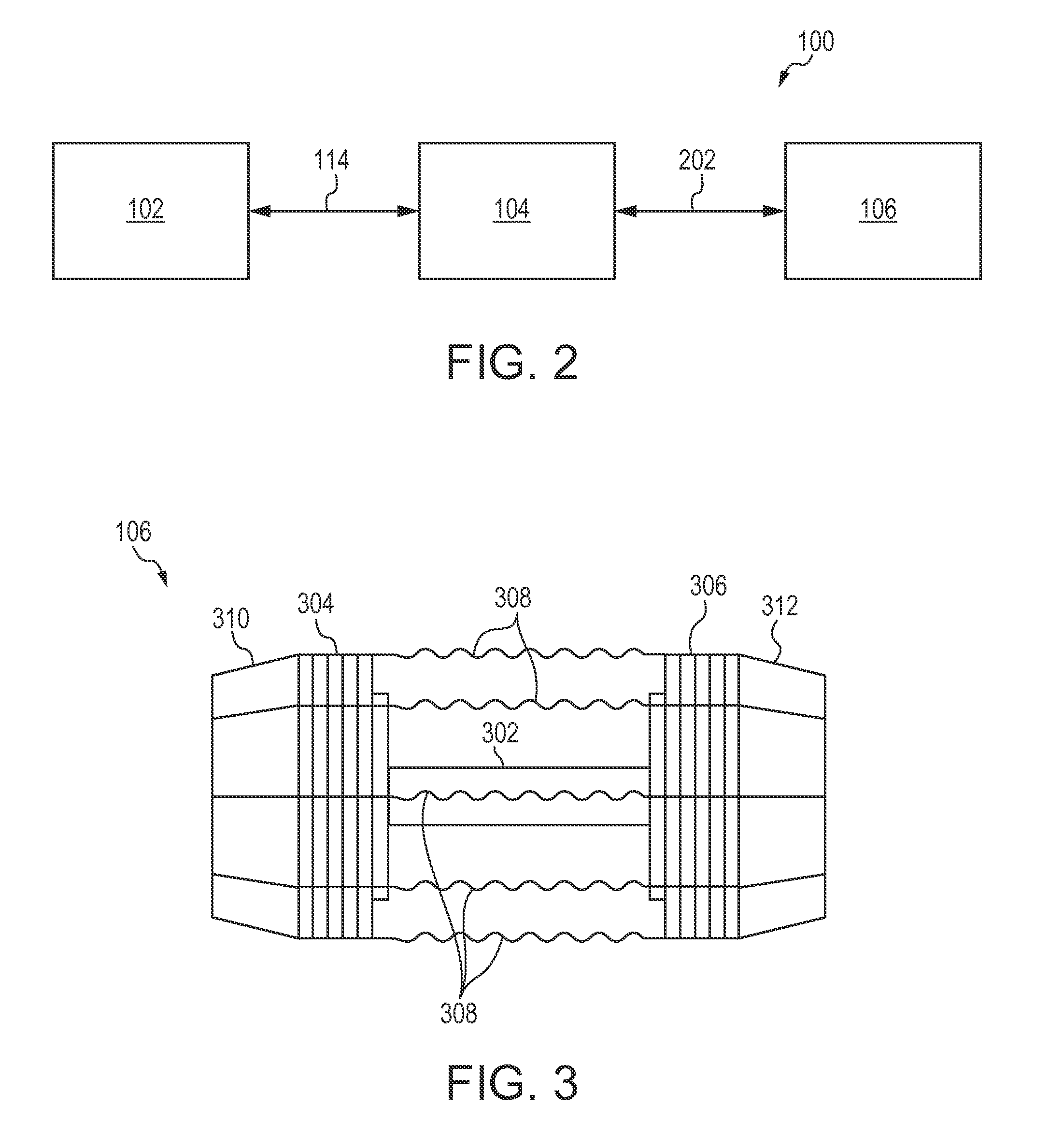System and Method of Solar Flux Concentration for Orbital Debris Remediation
a solar flux and orbital debris technology, applied in the field of solar concentrators, can solve the problems of space debris a hazard to future space vehicles, excessive power requirements for ground lasers, and large propagation losses of earth-based lasers, and achieves compact volume, large surface area, and effective system implementation.
- Summary
- Abstract
- Description
- Claims
- Application Information
AI Technical Summary
Benefits of technology
Problems solved by technology
Method used
Image
Examples
Embodiment Construction
[0002]This invention was made with government support under contract number HR0011-06-D-0003 awarded by the Defense Advanced Research Projects Agency (DARPA). The government has certain rights in the invention.
BACKGROUND OF THE INVENTION
[0003]1. Field of the Invention
[0004]The present invention relates to solar technologies, and more particularly to solar concentrators.
[0005]2. Description of the Related Art
[0006]Space debris includes man-made non-functional objects that are either in Earth orbit or re-entering the atmosphere. Some examples of space debris include non-functional satellites and fragments from space vehicle explosions or collisions. Space debris is a hazard to future space vehicles because of the risk of collision.
[0007]Space debris can be separated into three categories by size: Category 1 (10 cm). In particular, there are about 100,000 to 10,000,000 pieces of Category 2 space debris within 1600 km of the Earth's surface. Thus, it is important to remediate the large ...
PUM
 Login to View More
Login to View More Abstract
Description
Claims
Application Information
 Login to View More
Login to View More - R&D
- Intellectual Property
- Life Sciences
- Materials
- Tech Scout
- Unparalleled Data Quality
- Higher Quality Content
- 60% Fewer Hallucinations
Browse by: Latest US Patents, China's latest patents, Technical Efficacy Thesaurus, Application Domain, Technology Topic, Popular Technical Reports.
© 2025 PatSnap. All rights reserved.Legal|Privacy policy|Modern Slavery Act Transparency Statement|Sitemap|About US| Contact US: help@patsnap.com



